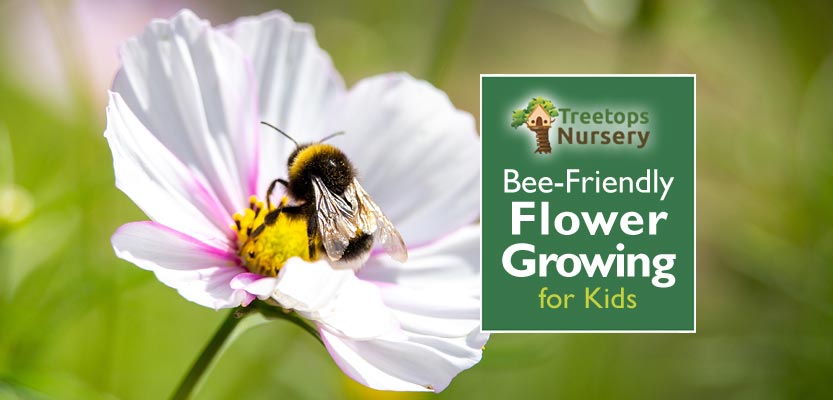
 Today, we follow up last month’s wildlife attracting guide for Under-5s with another, more specific, activity for children to undertake outdoors. This time, we outline easy-to-accomplish flower growing activities that children can enjoy, to attract bees and other friendly insects to the garden. While flowering plants can be purchased commercially ready-grown, we’ll concentrate today on ways children can grow wildlife-friendly flowers themselves, from seed. After all, it’s far cheaper, much more fun as an activity, teaches children more about nature and will also give them a greater sense of achievement. If it all goes well, the result will be some pretty flowers to brighten the place up as well as a host of charming and beautiful little creatures visiting. Children may get to see different types of bee perhaps along with butterflies, hover flies, ladybirds and probably many more wonderful creatures that might otherwise never have visited. Children will generally find flowers, bees and butterflies not only beautiful to look at, but also fascinating once they really start to look closely. After all, what’s not to love about stunning flowers and the cute, colourful pollinators that will visit them!
Today, we follow up last month’s wildlife attracting guide for Under-5s with another, more specific, activity for children to undertake outdoors. This time, we outline easy-to-accomplish flower growing activities that children can enjoy, to attract bees and other friendly insects to the garden. While flowering plants can be purchased commercially ready-grown, we’ll concentrate today on ways children can grow wildlife-friendly flowers themselves, from seed. After all, it’s far cheaper, much more fun as an activity, teaches children more about nature and will also give them a greater sense of achievement. If it all goes well, the result will be some pretty flowers to brighten the place up as well as a host of charming and beautiful little creatures visiting. Children may get to see different types of bee perhaps along with butterflies, hover flies, ladybirds and probably many more wonderful creatures that might otherwise never have visited. Children will generally find flowers, bees and butterflies not only beautiful to look at, but also fascinating once they really start to look closely. After all, what’s not to love about stunning flowers and the cute, colourful pollinators that will visit them!
Sourcing Bee-Friendly Seeds
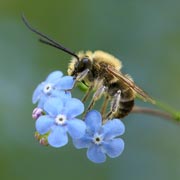 Parents/guardians of under-fives will need to supervise which seeds to buy — or to harvest free of charge at the end of a previous season. If purchased, they’re inexpensive with seed packets typically costing as little as £1.99 from places like Suttons, garden centres and even online from some supermarkets. Look out for seeds that are marked as suitable for growing bee-friendly and/or butterfly-friendly flowers, or are simply suitable for pollinators. Typical examples include seeds for poppies, sunflowers, forget-me-nots, sedum, buddleia, nasturtium, daisies, cornflower, cosmos and calendula. Even herbs will grow fragrant flowers that’ll attract pollinators if you allow them to grow to maturity. Good examples include mint, basil and thyme, any of which would serve a secondary purpose of being useful to eat — another useful and educational benefit of this activity for young children.
Parents/guardians of under-fives will need to supervise which seeds to buy — or to harvest free of charge at the end of a previous season. If purchased, they’re inexpensive with seed packets typically costing as little as £1.99 from places like Suttons, garden centres and even online from some supermarkets. Look out for seeds that are marked as suitable for growing bee-friendly and/or butterfly-friendly flowers, or are simply suitable for pollinators. Typical examples include seeds for poppies, sunflowers, forget-me-nots, sedum, buddleia, nasturtium, daisies, cornflower, cosmos and calendula. Even herbs will grow fragrant flowers that’ll attract pollinators if you allow them to grow to maturity. Good examples include mint, basil and thyme, any of which would serve a secondary purpose of being useful to eat — another useful and educational benefit of this activity for young children.
Even easier are seed packets that contain mixed wildflower seeds. As the name suggests, these contain a real mix, resulting in multi-coloured flowers that’ll liven up flower pots, balconies or garden beds and attract a multitude of different pollinator visitors.
Fun-to-Grow Seeds Just for Children
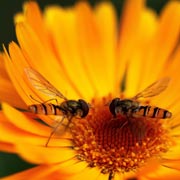 Suttons and other seed suppliers even offer whole ranges of bee-friendly flower seeds just for children. These include a ‘Bug Magnet’ flower seed kit for kids containing Calendula daisy seeds, 8 bug stickers and even a magnifying glass for closer inspection of the visiting bees, butterflies and insects. The price of that example is only £2.49 (price correct at time of writing — even cheaper if you’re a member). Sainsbury’s offers something completely different with their Bee-Friendly Flower Bomb Kits for little ones. Timing of this post is perfect too, as all these seeds can be sown during March, April and May, with flowers appearing anywhere from March to the end of September.
Suttons and other seed suppliers even offer whole ranges of bee-friendly flower seeds just for children. These include a ‘Bug Magnet’ flower seed kit for kids containing Calendula daisy seeds, 8 bug stickers and even a magnifying glass for closer inspection of the visiting bees, butterflies and insects. The price of that example is only £2.49 (price correct at time of writing — even cheaper if you’re a member). Sainsbury’s offers something completely different with their Bee-Friendly Flower Bomb Kits for little ones. Timing of this post is perfect too, as all these seeds can be sown during March, April and May, with flowers appearing anywhere from March to the end of September.
Sowing the Seeds
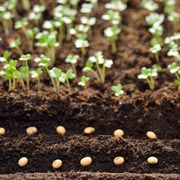 Commercially-supplied seeds will usually have instructions for sowing on the packets, so these can be followed easily. Generally speaking, though, there are a couple of main ways to sow flower seeds:
Commercially-supplied seeds will usually have instructions for sowing on the packets, so these can be followed easily. Generally speaking, though, there are a couple of main ways to sow flower seeds:
- The easiest way is for children to simply scatter seeds (spaced out according to individual instructions) onto some soft soil that’s been pre-prepared so it’s free of weeds. That might be, for example, in a flower bed, window box or in flower pots. The seeds can then be covered by a thin covering of sieved soil or compost and then slightly firmed down.
- Alternatively, children can sow the seeds in seed trays, flower pots, used yoghurt or margarine cartons or similar,
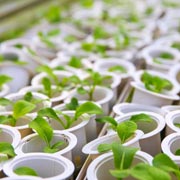 so long as whatever they use has drainage holes at the bottom (adults may need to supervise that part, for safety reasons). Drip trays will be needed underneath if this part is initially housed indoors. The earth used can be soil brought in from the outdoors or, of course, compost (suitable for seedlings and ideally peat-free as it’s better for the planet). Using this approach instead of the outdoor scattering approach will allow children to manually space out individual seeds more easily, once they’ve actually sprouted.
so long as whatever they use has drainage holes at the bottom (adults may need to supervise that part, for safety reasons). Drip trays will be needed underneath if this part is initially housed indoors. The earth used can be soil brought in from the outdoors or, of course, compost (suitable for seedlings and ideally peat-free as it’s better for the planet). Using this approach instead of the outdoor scattering approach will allow children to manually space out individual seeds more easily, once they’ve actually sprouted.
Either way, the soil should be kept moist over coming days/weeks, so children should check on progress daily.
Safety Notice
Read the seed packet because some seeds can be poisonous. Therefore, this activity should be undertaken only with the close supervision of a responsible adult. Children will need to be closely monitored when handling seeds and earth, and will need to take appropriate safety precautions, for example keeping hands away from the mouth and eyes and washing their hands with soap and water afterwards.
Along with regular watering, a suitable organic liquid feed will help to bring on some types of seedlings. However, as some liquid feeds can be poisonous, handling of it is best left to a supervising adult.
 After about ten days to two weeks or so, seedlings should start to appear through the soil. Once they start to grow significantly, it may be necessary for children to ‘thin’ some of them out, by transplanting any that are cramped, so there’s only one plant every few inches. This will allow each plant to grow to a significant size in the coming weeks, free of overcrowding.
After about ten days to two weeks or so, seedlings should start to appear through the soil. Once they start to grow significantly, it may be necessary for children to ‘thin’ some of them out, by transplanting any that are cramped, so there’s only one plant every few inches. This will allow each plant to grow to a significant size in the coming weeks, free of overcrowding.
Once they’re mature, flowers should begin to appear and then it all starts to look rather beautiful. It may even be fragrant, depending on the plants chosen.
Along Come the Bees, Butterflies & More
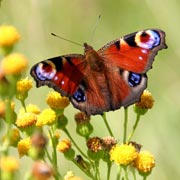 Once flowers are coming through, many types of delightful pollinators will soon follow. These are likely to include various types of bee, different kinds of butterfly, hover flies, ladybirds and potentially many other pollinators.
Once flowers are coming through, many types of delightful pollinators will soon follow. These are likely to include various types of bee, different kinds of butterfly, hover flies, ladybirds and potentially many other pollinators.
Children Learn from Nature
Children can then have educational fun taking a closer (but careful) look at the visiting creatures and perhaps even saying ‘hello’. Actually, it’s not a bad idea to encourage children to greet the visiting pollinators in this way because it demonstrates to children that each is a little being that deserves to live safely and be given space, peace and respect. Teaching children to recognise even the smallest creatures as individuals may also help to reduce the chances of children being fearful of them. 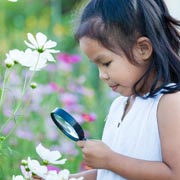 After all, little pollinators are generally very harmless, hard-working creatures who just want to go about their business in peace. They are, though, completely charming when you take the time to watch them and this is too easily missed by children if they’re glued to screens or kept indoors too much. Given the opportunity, children learn and benefit so much from nature, so this activity is very worthwhile one for under-fives and, indeed, for children of any age. Learning from/about nature also supports the ‘Understanding the World‘ aspect of the EYFS curriculum, which is so incredibly important to under-fives.
After all, little pollinators are generally very harmless, hard-working creatures who just want to go about their business in peace. They are, though, completely charming when you take the time to watch them and this is too easily missed by children if they’re glued to screens or kept indoors too much. Given the opportunity, children learn and benefit so much from nature, so this activity is very worthwhile one for under-fives and, indeed, for children of any age. Learning from/about nature also supports the ‘Understanding the World‘ aspect of the EYFS curriculum, which is so incredibly important to under-fives.
Looking for the Best Childcare Service in Willesden, NW10?
Or the best nursery or pre-school in Harlesden, Willesden or Kensal Green?
 Today’s guide was brought to you by Treetops Nursery, one of the best nurseries and pre-schools in the Willesden, Willesden Green, Kensal Green, Harlesden and NW10 areas of London. We’re independently rated by Ofsted as a Good early years provider in every category, so you know your baby, toddler or preschooler will be well looked after — and indeed will absolutely thrive — at Treetops Nursery. To register a place for your child, request a visit, ask a question or to find out more, please get in touch:
Today’s guide was brought to you by Treetops Nursery, one of the best nurseries and pre-schools in the Willesden, Willesden Green, Kensal Green, Harlesden and NW10 areas of London. We’re independently rated by Ofsted as a Good early years provider in every category, so you know your baby, toddler or preschooler will be well looked after — and indeed will absolutely thrive — at Treetops Nursery. To register a place for your child, request a visit, ask a question or to find out more, please get in touch:
Next Time:
Next time, we’ll publish a wonderful guide to bird feeders that children can make at home.

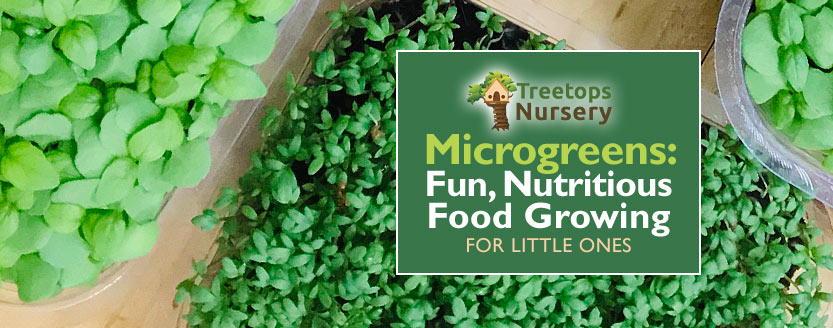
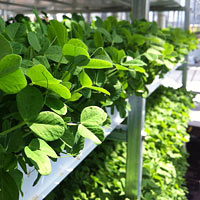 There is one class of edible plant that can be grown all year round and is perfect for kids to grow indoors, for example on a windowsill. Some types of this food will sprout in as little as a week. What’s more, it’s tasty and highly nutritious. Growing it is super-easy and a perfect way to keep kids entertained, educated about nature and eating healthily. It’ll also be a welcome addition to mealtimes for the whole household.
There is one class of edible plant that can be grown all year round and is perfect for kids to grow indoors, for example on a windowsill. Some types of this food will sprout in as little as a week. What’s more, it’s tasty and highly nutritious. Growing it is super-easy and a perfect way to keep kids entertained, educated about nature and eating healthily. It’ll also be a welcome addition to mealtimes for the whole household.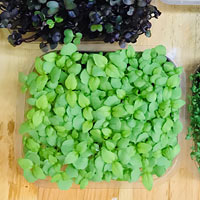 Here are just a few examples of plants that make suitable microgreens and can easily be grown by children indoors:
Here are just a few examples of plants that make suitable microgreens and can easily be grown by children indoors: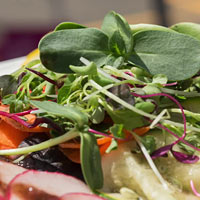 Fennel — just 10 days after first sprouting, leaves from young fennel seedlings will give a pleasant aniseed tang to dishes like pasta salads, risottos, soups and even stuffing.
Fennel — just 10 days after first sprouting, leaves from young fennel seedlings will give a pleasant aniseed tang to dishes like pasta salads, risottos, soups and even stuffing.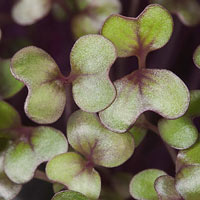 Red Cabbage micro leaves have one of the highest Vitamin C concentrations of any microgreen. They also contain Vitamin K, potassium, beta-carotene, calcium, magnesium and antioxidants. As with many of the microgreens, many top chefs use them as an attractive and tasty garnish. They can be sprinkled over soups, salads, grilled vegetables, stews and cooked meats. After sowing, they take only days to appear.
Red Cabbage micro leaves have one of the highest Vitamin C concentrations of any microgreen. They also contain Vitamin K, potassium, beta-carotene, calcium, magnesium and antioxidants. As with many of the microgreens, many top chefs use them as an attractive and tasty garnish. They can be sprinkled over soups, salads, grilled vegetables, stews and cooked meats. After sowing, they take only days to appear. Your child will need to fill the chosen containers with compost, not quite to the top. Tap it to level the soil, then pat it down just a little to firm it. Some gardeners also indent the compost where the seeds will go. The seeds then need to be carefully placed or lightly sprinkled into the indented areas. It’s important that your child spaces the seeds out so there is no clumping, otherwise significant problems can occur (the crop might get diseased or even completely fail). The seeds don’t need to be covered but a light dusting of sieved compost will keep them in place while allowing light to get through. The seeds then need to be lightly watered. It’s best for your child to do this part outside, just to avoid potential mess indoors, taking care not to over-water nor to wash the seeds away. A way to water them indoors is to simply stand the vessels in some shallow water for 30 to 60 minutes, so the compost naturally draws up the moisture.
Your child will need to fill the chosen containers with compost, not quite to the top. Tap it to level the soil, then pat it down just a little to firm it. Some gardeners also indent the compost where the seeds will go. The seeds then need to be carefully placed or lightly sprinkled into the indented areas. It’s important that your child spaces the seeds out so there is no clumping, otherwise significant problems can occur (the crop might get diseased or even completely fail). The seeds don’t need to be covered but a light dusting of sieved compost will keep them in place while allowing light to get through. The seeds then need to be lightly watered. It’s best for your child to do this part outside, just to avoid potential mess indoors, taking care not to over-water nor to wash the seeds away. A way to water them indoors is to simply stand the vessels in some shallow water for 30 to 60 minutes, so the compost naturally draws up the moisture. Once rinsed, the tender young micro leaves can be enjoyed in meals by the whole family. They’ll add often exquisite tastes and textures to meals as well as adding much-needed vitamins and minerals to the family diet. That’s even more important for growing toddlers and preschoolers, of course. And, throughout the growing journey, the children will absolutely love seeing the new shoots grow into young plants. They will have learnt new skills, had great fun getting to know more about nature and have a real sense of achievement. Chances are, too, that they will love the taste of the micro leaves.
Once rinsed, the tender young micro leaves can be enjoyed in meals by the whole family. They’ll add often exquisite tastes and textures to meals as well as adding much-needed vitamins and minerals to the family diet. That’s even more important for growing toddlers and preschoolers, of course. And, throughout the growing journey, the children will absolutely love seeing the new shoots grow into young plants. They will have learnt new skills, had great fun getting to know more about nature and have a real sense of achievement. Chances are, too, that they will love the taste of the micro leaves.